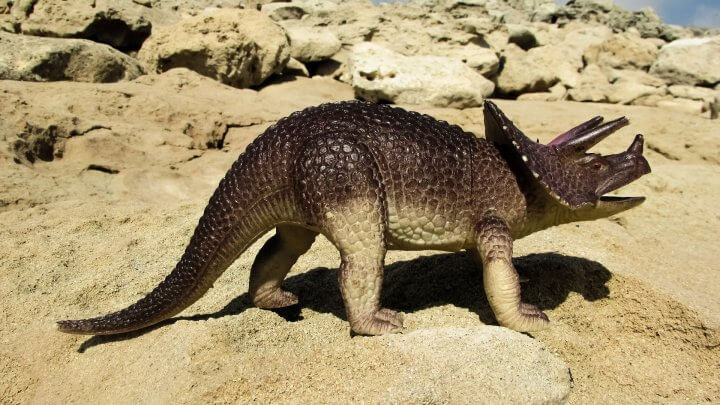Most everyone knows that dinosaurs once roamed the earth. We know that they were large, some were herbivores, some carnivores. We know that some used four legs, others two. We know a lot of things about creatures that have not existed in what we estimate to be sixty-five million years, and that evolved about 230 million years ago. So, how do we study and learn about these extinct dinosaurs?
The study of dinosaurs, and the knowledge about dinosaurs that is derived from this study, is gained from a variety of fossil and non-fossil records. Such records include fossilized bones, feces, trackways, gastroliths, feathers, impressions of skin, internal organs and soft tissues. With the thousands of animals that lived on the planet, there are very few fossils in comparison. It is even harder to find impressions of skin and soft tissues. So, when these things are found, it is a treasure, and it is also rare enough to be very exciting.
The study of dinosaurs is not limited to just paleontology. In fact, to properly study dinosaurs requires the help of many fields of study. You have physics, chemistry, biology, earth sciences, and many of the sub categories that fall into these fields of study.
Through the study of dinosaurs, it has been discovered that dinosaurs were not restricted to any part of the earth; in fact, dinosaur remains have been found on every continent on Earth, this includes Antarctica, believe it or not. In addition to this, there have been a ton of dinosaur remains and fossils that are identical, or very closely related that are found on different continents and different land masses. So, this has a number of theories behind it. Most of the theories support the idea that the earth was once a super continent that broke apart (often referred to as Pangaea).
The study of dinosaurs started in the 1900s, but most dinosaur research really began in the 1970s, and has been ongoing from there.
What started this surge of dinosaur study? Well, before this time dinosaurs were thought to be slow, sluggish, and cold blooded; then John Ostrom discovered the Deinonychus, which proved to be an active, vicious predator that may have been warm-blooded. This new look at dinosaurs sparked interest. Since that time, paleontology, and studying dinosaurs became global, and many great discoveries have been made.
Major new dinosaur discoveries have been made by paleontologists working in areas that before had not been touched. Such areas include India, South America, Madagascar, Antarctica, and most significantly in China. It was in China that the discovery of the well-preserved feathered dinosaurs was made, which linked them to modern birds.
Also, another huge help in the study of dinosaurs is cladistic analysis, which helps to analyze the relationship between biological organisms, and helps to compensate for incomplete fragments and fossil records.
Part of the study of dinosaurs is dinosaur classification. The classification is made by when they lived, and other things, including the number of temporal fenestrae, their teeth, and jawbone extensions, how the legs extend from the pelvis, etc. There is so much to be learned about dinosaurs, and so much speculation and controversy about what has been discovered and decided. The world is open for more paleontologists, and more scientists to study fossils, and determine the relationships between what you see and find and what that means as far as their behaviors go.
Because they existed so long ago, and are now extinct, there is much to learn, and the study of dinosaurs is really truly fascinating.


Leave a Reply